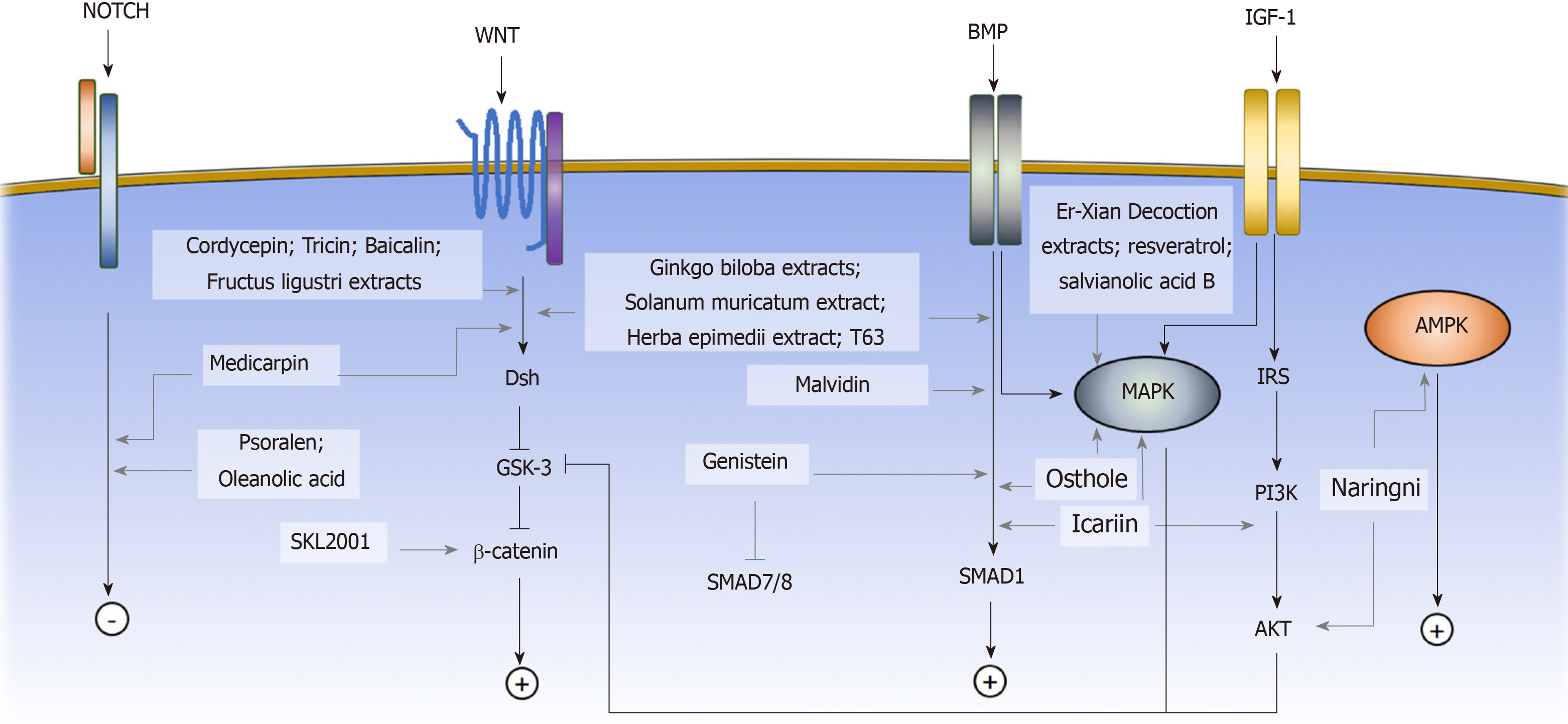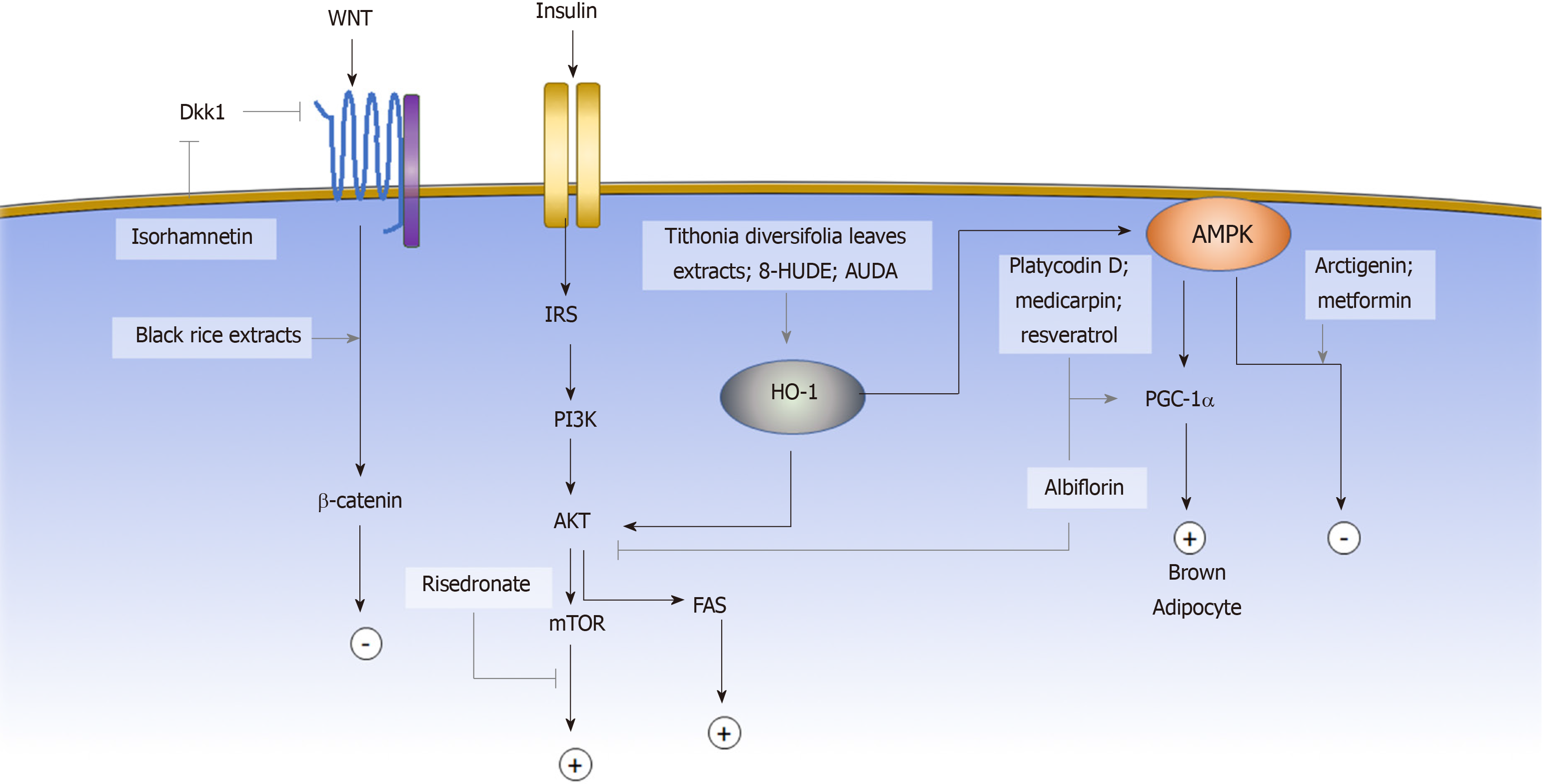Copyright
©The Author(s) 2019.
World J Stem Cells. Dec 26, 2019; 11(12): 1084-1103
Published online Dec 26, 2019. doi: 10.4252/wjsc.v11.i12.1084
Published online Dec 26, 2019. doi: 10.4252/wjsc.v11.i12.1084
Figure 1 Small molecules guiding mesenchymal stem cell osteogenic cell fate determination.
Wnt, BMP, and Notch signaling cascades are the three major pathways governing the expression of the master regulator runt-related transcription factor 2 during mesenchymal stem cell (MSC) osteogenic commitment. The activation of Wnt, Notch and BMP signaling pathways by small molecules promotes the osteogenesis of MSCs. The MAPK and PI3K/AKT signaling pathways interfere with GSK3 phosphorylation and β-catenin degradation and therefore exert an effect on osteogenesis. The AMP-activated protein kinase pathway has also recently been shown to be involved in osteogenic regulation. AMPK: AMP-activated protein kinase.
Figure 2 Small molecules guiding mesenchymal stem cell adipogenic cell fate determination.
Many pathways are involved in regulating the adipogenesis of mesenchymal stem cells, including the Wnt, AKT and AMP-activated protein kinase (AMPK) pathways. Activating the AKT pathway promotes the differentiation of adipose stem cells, whereas activating the heme oxygenase-1, Wnt or AMPK pathway inhibits adipogenesis. FAS: Fatty acid synthase; 8-HUDE: 12-(3-hexylureido) dodec-8(Z)-enoic acid; AUDA: 12-(3-adamantan-1-yl-ureido)-dodecanoic acid; HO-1: Heme oxygenase-1; AMPK: AMP-activated protein kinase.
- Citation: Cheng YH, Dong JC, Bian Q. Small molecules for mesenchymal stem cell fate determination. World J Stem Cells 2019; 11(12): 1084-1103
- URL: https://www.wjgnet.com/1948-0210/full/v11/i12/1084.htm
- DOI: https://dx.doi.org/10.4252/wjsc.v11.i12.1084










